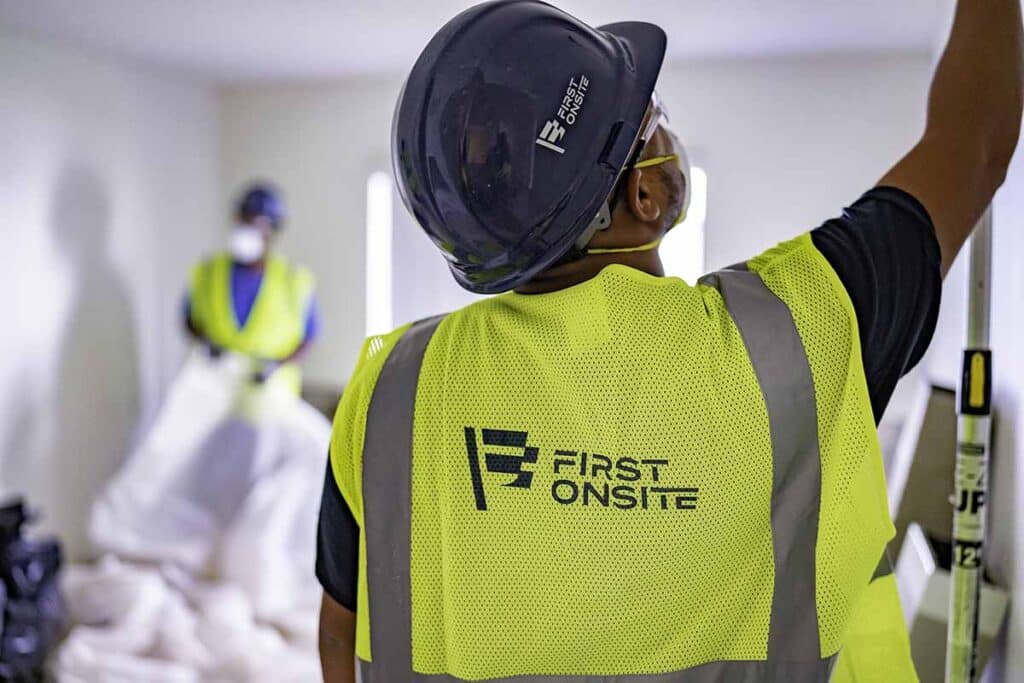About Us
The Only Restoration Company You’ll Ever Need
First Onsite is a full-service disaster recovery and property restoration enterprise providing end-to-end support to its clients across North America. We are a team of companies and our wide footprint is ever-growing so that we can serve client needs throughout the regions we touch. With over 100 offices, our local teams are built to address the specific risks of each region while having a pool of national resources to support them as they respond to events of all kinds. Our organization is designed so that each office can help the others with resources, staff, and relevant experience when it’s needed.

Our Values
Our Purpose
We help our clients across North America and beyond recover from property damage through restoration and reconstruction. With both pre-loss planning and post-event recovery services, we are able to efficiently mitigate our clients’ property damage events, speeding up the restoration process and equipping them with the tools and knowledge to return from crisis as if it never happened.
Our Culture
Our team is filled with empathetic, accountable and passionate employees across the country, who share a desire to have a positive impact on the lives of those who have experienced property damage and the loss that results. As a team, we live our values and support one another as we collectively take care of our customers and community.
Our atmosphere is one where each employee is celebrated for their unique contribution to the greater organization and for how those contributions help make our organization as a whole even better. Our commitment to each other and our clients is not about corporate responsibility—it’s a part of who we are.
Work with Us
Build a career in restoration from the ground up. Explore our various job openings and career paths, from entry-level to leadership roles.

Our History
In 1998, Interstate Restoration opened its doors in San Antonio, Texas. What started as a family-owned business would focus on expansion through careful acquisitions of property restoration companies across the United States (including Puerto Rico) and Canada. Only those who aligned with Interstate’s values and had proven to be restoration industry leaders were added to the team.
In 2019, Interstate Restoration became a part of FirstService Corporation, North America’s leader in property services. These organizations became united in a commitment to providing the highest levels of service and value to the clients they serve. Interstate continued to see growth under FirstService Corporation until Interstate Restoration and its partners across the country became known as First Onsite Property Restoration.
Learn more about the companies that came together as First Onsite.